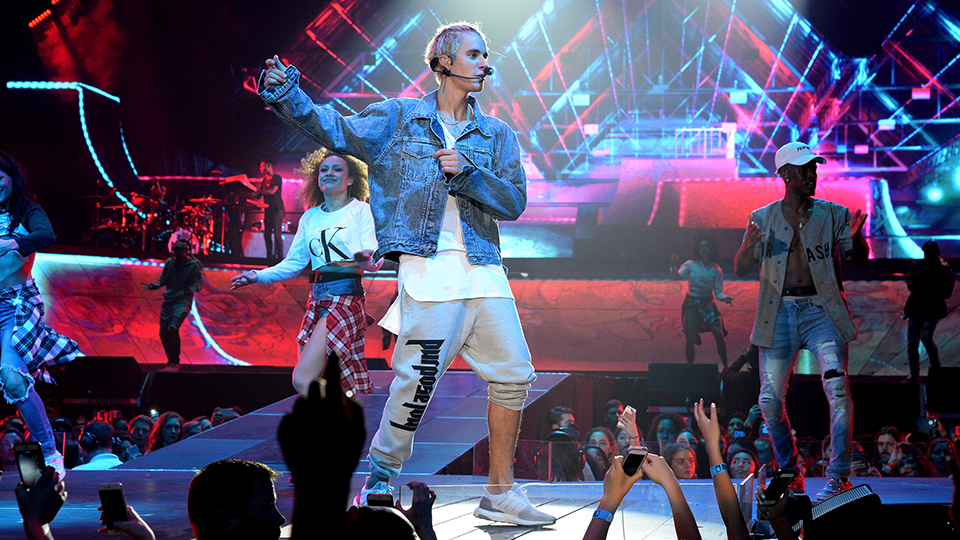How Justin Bieber’s ‘Purpose’ range blurred the lines
Pop star and streetwear icon Justin Bieber has proved in recent years that owning an influential clothing line is integral to the growth of an artist, and their ever-expanding fan base. Though, perhaps not even the 24-year-old could have predicted the impact his ‘Purpose’ tour would have on contemporary fashion. Of course, merchandise has always played a key role in many aspects of the music industry, but it was Bieber’s release which blurred the lines between tour merch, and fashion, forever. With amped-up versions of Bieber’s day-to-day kits making for surprisingly cool wardrobe essentials, fashion giant H&M soon announced their intention to stock the full range for Beliebers and fashionistas worldwide, with ASOS soon following suit. Using the popularity and widespread reach of both companies, Justin soon found himself with a HQ, a base to locate his garments to the masses and ensure maximum reach.
Bold tones and typographical details dominated the collection, with monochromatic logo sweaters – supplied by streetwear chain Champion – and long and short-sleeved tees emblazoned with terms like ‘stadium’, ‘tour’ and even the locations of the 36 tour locations. Of all the players to enter the merch wars, Bieber has undoubtedly staked a claim as the most triumphant, thanks to the help of Fear of God’s Jerry Lorenzo. But for artists looking to launch merch, perhaps one of the key components of a successful campaign is consistency. In early 2017, this is exactly the area Bieber touched on when the pop star came back with the “Purpose the Stadium Tour” collection; bold colors, BMX graphics, and a fresh, brand-new feel to the range. The pieces sold out quickly and established Bieber as more than just a one-hit merch wonder, giving a ‘remix’ to his 2016 originals.

Unlike Kanye West, who came under fire for his outlandish pricing on his ‘I Feel Like Pablo’ range, Bieber’s items were more affordable for the masses, giving the collection a more widespread, and less niche appeal. Utilising his widespread sex appeal, the Canadian wore many of the pieces in public, and at shows, boosting the profile of the range, and proving that the best type of advertising was his own self-promotion.
Not only did the relaunch provide hugely successful from a sales viewpoint, JB soon found his items establishing themselves as trendsetters. ‘Iron Maiden’ style gothic fonts became bigger than ever, nu-age metal established itself as the now must-have look, whilst several firms began stocking oversized tees; a trend that first (briefly) emerged half a decade earlier with roll-up short sleeves. Combining large chest prints, and a ‘retro’ feel, it wasn’t long before retailers began to cash in on similar designs featuring popular cult figures such as Lauryn Hill, Louis Theroux, and David Attenborough.
Undoubtedly, if positioned to the masses correctly, a clothing line can become the chief ally of an artist’s marketing campaign; with more and more consumers emblazoning the logo of their hero wherever they go. For Justin, the key components of such a hugely successful campaign involved tapping into the recent boom in streetwear trends, and the resurgence of 90’s brands like Kappa, Fila, and Champion. In an age where the merch market begins to become saturated, the ultimate aim for any artist should be, like Justin, to give their collection clear ‘Purpose.’
